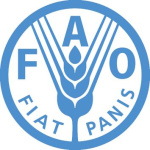- Industry: Agriculture
- Number of terms: 87409
- Number of blossaries: 0
- Company Profile:
Established in October 1945 with the objective of eliminating hunger and improving nutrition and standards of living by increasing agricultural productivity, FAO coordinates the efforts of governments and technical agencies in programs for developing agriculture, forestry, fisheries, and land and ...
A non-rigid, corkscrew-shaped bacterium that moves by means of muscular flexions of the cell.
Industry:Biotechnology
A normal cellular gene that can be changed to an oncogene by mutation or by being incorporated into a retrovirus and then being transcribed at inappropriate times and/or in inappropriate tissues.
Industry:Biotechnology
A nucleic acid strand that is composed of one kind of nucleotide, e.g., GGGGGGGG.
Industry:Biotechnology
A nucleoside consisting of one guanine molecule linked to a D-ribose sugar molecule. The derived nucleotides, guanosine mono-, di-, and triphosphate (GMP, GDP, and GTP, respectively), are important in various metabolic reactions.
Industry:Biotechnology
A nucleoside with one or more phosphate groups linked to the 5´ carbon of the pentose sugar. Ribose-containing nucleosides include ribonucleoside monophosphate (NMP), ribonucleoside diphosphate (NDP), and ribonucleoside triphosphate (NTP). When the nucleoside contains the sugar deoxyribose, the nucleotides are called deoxyribonucleoside mono-, di-, or tri-phosphates (dNMP, dNDP, or dNTP). A building block of DNA and RNA.
Industry:Biotechnology
A nucleotide sequence - composed typically of 4, 6 or 8 nucleotides - that is recognized by and to which a restriction endonuclease (restriction enzyme) binds. For type II restriction enzymes (those used in gene-cloning experiments) it is also the sequence within which the enzyme specifically cuts (and their corresponding enzymes methylate) the DNA, i.e., for type II enzymes, the recognition site and the target site are the same sequence. Type I enzymes bind to their recognition site and then cleave the DNA at some more or less random position outside that recognition site.
Industry:Biotechnology
A nucleotide sequence in the 5´ region of a prokaryotic gene (or in its RNA) that causes premature termination of transcription, possibly by forming a secondary structure.
Industry:Biotechnology
A nucleotide sequence that only affects the expression of genes located on the same chromosome.
Industry:Biotechnology
A nucleus formed by the fusion of nuclei from two different somatic cells during somatic-cell hybridization.
Industry:Biotechnology
